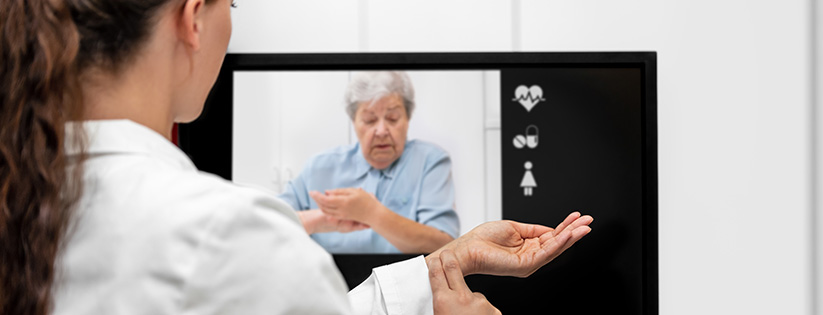Telehealth has overtaken the healthcare industry, and there seems to be no turning back. When the telehealth guidelines were initially expanded, the intention was to meet patient and provider needs while minimizing exposure to COVID-19 and the coronavirus during the Public Health Emergency (PHE).
Quickly, the American Medical Association (AMA) and the World Health Organization (WHO), responsible for the CPT and ICD-10-CM classification systems, respectively, issued emergency codes that were accepted immediately by Medicare and most insurance payers. While things have gone relatively smooth, questions still arise about code usage and maximizing reimbursement.
Telehealth Coding FAQs
What is the future of telehealth following the PHE?
Prior to COVID-19 and PHE, there was a great deal of resistance to the idea of telehealth from providers and patients. However, as is usually the case with anything new, telehealth in practice has proven to be an effective alternative to traditional face-to-face patient care and has been widely accepted in a very short amount of time.
While there has been no formal announcement or decree, it appears that most commercial insurers (and possibly Medicare) are planning to recognize telehealth in full post-pandemic, including E/M-type visits, E-Visits, and Remote Monitoring Visits. America’s Health Insurance Plans (AHIP) has the most thorough repository of insurance payer information, but specifics may still be best verified through each insurance company.
Are telephone calls allowed for E/M visits?
On April 30th, CMS changed the guidelines to include telephone-only visits (Codes 99441, 99442, and 99443) and allowed providers to receive reimbursement equal to in-office E/M visits. Shortly thereafter, most commercial payers joined CMS in allowing telephone-only care as well. This is retroactive to March 6th.
How do we use the new modifier -CS?
Modifier -CS (cost-sharing waiver eligible) are being accepted by CMS, as well as all other payers, and should be added to codes when providing COVID-19 care. This modifier triggers reimbursement at 100% of the allowable as long as a COVID-19 test was ordered.
This change is retroactive back to March 18th. When using the -CS modifier, all other tests ordered will also be covered at 100%, i.e., flu test, blood work, etc.
What is the best “Place of Service” (POS) code to use for maximum reimbursement?
Initially, it was recommended that you use the 02 POS modifier for telehealth. However, using 95 as the POS is now preferred and will provide the best reimbursement since payment will be considered at a non-facility rate.
Additionally, -95 should append the claim lines that were delivered via telehealth. If code -CS is used as well, -95 should assume the secondary position since it is informational only.
Remember to consult individual insurance payers about their requirements; some are still requiring the use of 02 POS, with a few even requiring GT, an old, outdated code for telehealth that fell from favor many years ago.
How do we use the virtual check-in code G2012?
Code G2012 denotes a brief communication between the provider and an established patient and may not be within the 7-day period following any E/M visit. For those telehealth services that fall within the 7-day follow up period, consider using remote monitoring codes (99453, 99454, and 99457).
What if a visit is terminated prematurely due to technological failure?
Hardware/software glitches happen! If a visit is suspended prior to resolution, consider reestablishing contact by phone to conclude the encounter. A phone-only visit is reimbursed at the same rate as E/M codes. Be sure to document the change in technology.
How do I code for remote monitoring services?
Remote monitoring can be used for a brief check-in following a visit or procedure, or for device management, i.e., pulse oximeter, Holter monitor. Codes 99453 and 99454 are initial set-up and patient education codes, while Code 99457 bills in units of time (20 minutes).
Has an end date been set for the PHE or use of telehealth?
At this point, there has not been a definitive end date set. Some payers have targeted June 30th, but in reality, it is still fluid. The government and CMS have issued no end date thus far for the PHE, but as mentioned before, telehealth is being considered to carry on post-pandemic.
Contact Infinx to learn more about our coding and billing support for temporary scalable fluctuations or as part of a long-term revenue cycle management strategy.
